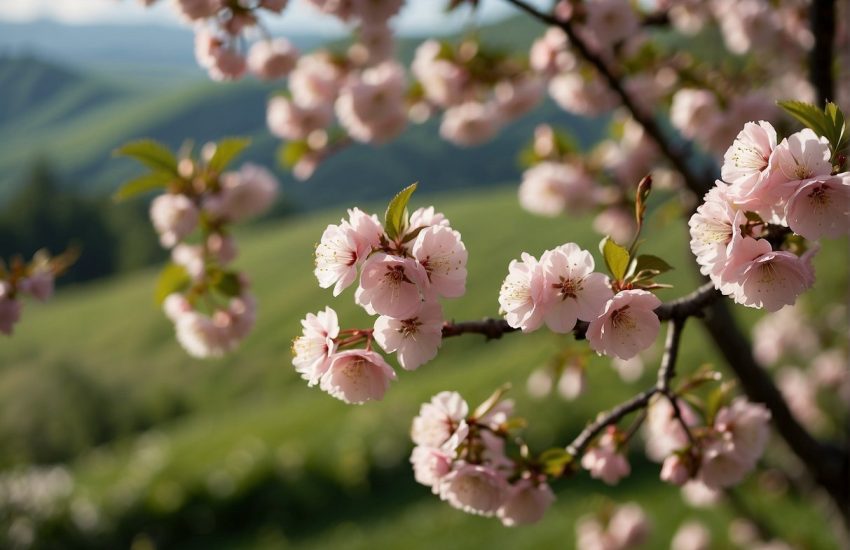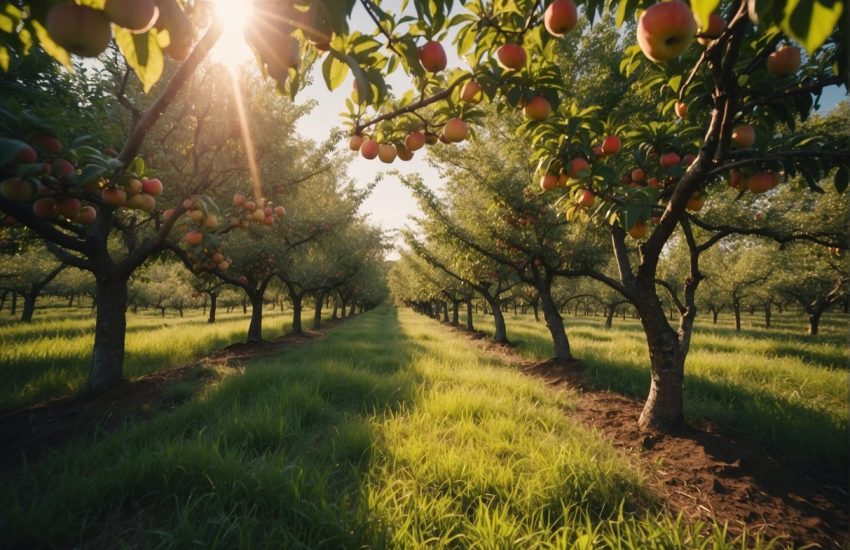7 Best Apple Trees To Grow In North Carolina
It is very difficult for North Carolina growers to decide what kind of fruit trees they want to grow in their home orchards.
As a result of the warm summers and cool winters, the area is capable of producing excellent crops of apples, pears, persimmons, plums and more.
On the other hand, the humid climate means that variety selection, as well as tree maintenance, will be key to preventing pest and disease problems.
There is one type of tree that has proven to be the best in most states: the apple tree. The plants are cold hardy, heat tolerant to a certain extent (more so with Tree Paint), but do need a fair amount of maintenance to ensure a good yield.
In order to ensure a fruitful tree with good-sized apples, it is important to prune the tree in the winter (anything dead, damaged, or diseased should be removed), top-dress it with compost and mulch in the spring, and thin the fruits as the season progresses.
Additionally, you should also develop a regular watering regime, especially during the summer months when it is hot and humid.
The humidity can be an issue for many fruiting trees, so spraying them with organic fungicides will certainly assist, but they are not a necessity for them.
Keeping on top of disease will be one of the most important things you need to do if you want your trees to live long. A gardener’s yard would be incomplete without an apple tree. Having a large garden gives you the opportunity to plant several apple trees in your yard.
You probably envision tiny rocks, rock-hard fruits that make your mouth turn inside-out and cause everlasting lockjaw when thinking of crabapples. We are here to change your mind about the Chestnut Crabapple Tree.
Chestnut crabapple trees contain high levels of sugar, which makes them extremely sweet.
There will be overtones of honey, pears, oranges, and vanilla, making you wonder if your crabapple tree is really something else.
Don’t worry, it’s a crabapple tree! Even some say that the Chestnut Crabapple tastes like hazelnuts.
A chestnut crab apple is a slightly yellow to soft red fruit that can be munched on while working in the yard or baked into jams, pies, or preserves.
Crabapples barely grow larger than two inches in diameter, but have just as much flavor as some of the best apple varieties.
In early September, as the apples ripen and become ready to pick, their petite size makes them the perfect apple for kids or as a tabletop bowl of adorable apples.
Dorsett Golden Apple Tree
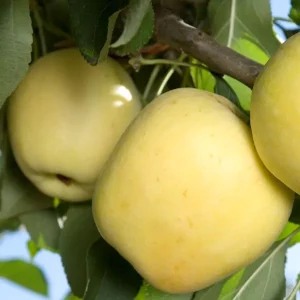
From a purely aesthetic point of view, the Dorsett Golden Apple (Malus ‘Dorsett Golden’) has ornamental beauty.
This tree blooms in the spring with white blossoms that welcome the season and call out to butterflies and hummingbirds.
Over time, those blooms turn into golden spheres of fruit with a delicious flavor!
Dorsett Golden Apples bear fruit that’s medium-sized to large, which is ideal for fresh-eating apples since they’re neither too small nor too large.
During ripening, apples develop a greenish-yellow color with a bit of rosy to scarlet blush, which is a result of their time spent worshiping the sun.
Against the vibrant green foliage of the tree, these gorgeous apples offer a show unto themselves, much to the delight of both growers and passersby.
Gravenstein Apple Tree
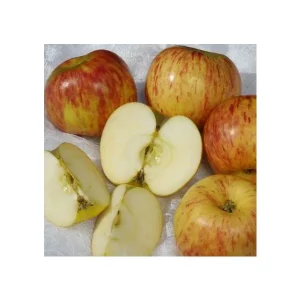
The Gravenstein Apple originated in Denmark in the early 1600s, where it is known as a native and is proclaimed as the country’s national fruit.
Russian settlers brought this amazing fruit to the United States in the early 1800s, and orchards were planted at Fort Ross, California.
A special tree, the Gravenstein Apple tree (Malus ‘Gravenstein’) was immediately recognized for its adaptability, versatile use, and outstanding flavor.
Upon opening, blooms revealed fragrant white blossoms followed by crisp, snappy fruit with red stripes that is light green in color.
Their white flesh is tangy and sweet, with hints of honey aroma, and has a wonderfully distinctive flavor.
Empire Apple Tree
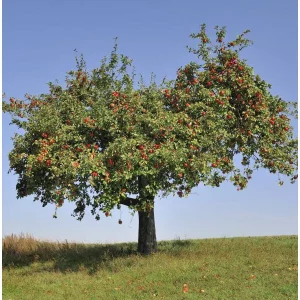
The Empire Apple Tree (Malus ‘Empire’) offers two of the world’s most beloved apple varieties: the Red Delicious and the Macintosh.
Because it combines the best qualities of both of its parents, you know this is an apple that won’t last long in your bowl.
Apple trees from the Empire family are easy to grow and are a perennial favorite.
The fruit is longer-lasting and has a super sweet taste that is complemented by a crisp snap of firm flesh.
Apple lovers love the Empire’s crimson red skin and dove white flesh, which makes it a favorite.
As with your childhood memories, the taste is sweet and desert-like, far more enjoyable than the vending machine snacks. Some customers say the taste and scent of the McIntosh are superior to those of its parent.
You can cook with this apple for almost any purpose. You can eat it fresh, add it to fruit salads, mince it in sauces, ciders and bake with it. You can even freeze it.
Red Jonathan Apple Tree
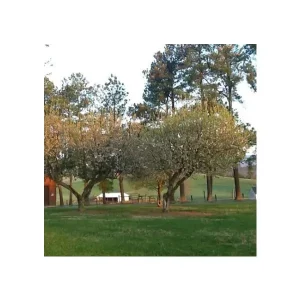
Jonathan Apple (Malus ‘Red Jonathan’) is a deciduous fruit tree that produces one of the most sought-after heritage apples!
Known as the Red Jonathan, you can plant several of these space-saving beauties in your side yard for a garden-sized orchard of healthy fruit today!
Over time, the Jonathan apple became one of the most popular varieties of apple grown in North America.
This was primarily due to its adaptability and flavor, as well as its popularity in apple hybridization for years.
The Jonathan apple variety is the parent of many popular apple varieties you’ve probably heard of! There are many varieties of apples, including Jonagold, Jonamac, Idared, Melrose, and Akane.
Jonathan Apple Tree produces beautiful, juicy, bright red apples with a slight zing to their flavor that are medium-sized, sweet, and juicy.
They’re delicious eaten fresh right off the tree and great for making pies and cider. Even after they’ve been picked, you can enjoy the apples for quite a while.
Dolgo Crabapple Tree
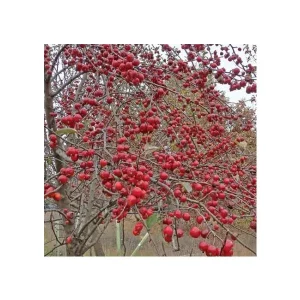
Since its introduction to North America from Russia nearly a century ago, the Dolgo Crabapple Tree (Malus ‘Dolgo’) has impressed growers around the world.
Among a group of Malus baccata seedlings introduced to South Dakota by Professor N. E.
Hansen, the Dolgo was chosen as the best of the lot of seedlings and introduced to the market in 1917.
There is no doubt that because it is an early and heavy bearing variety, it became an instant hit.
As well as its resistance to fire blight, it also gained favor with home growers due to its ability to resist apple scab.
It is estimated that the Dolgo Crabapple was the most common commercial variety grown in Minnesota as early as 1940.
The juice content of this product was noted across the country for its high level of juice content and excellent flavor for everything from jellies to cider.
Generations of gardeners have loved this tree ever since its introduction, and it may bring back wonderful childhood memories for many gardeners.
This spectacle begins in early April, when the Dolgo crabapple sprouts fragrant, self-pollinating, white flowers in the form of apricot-pink buds that open into an explosion of fragrant, self-pollinating flowers.

